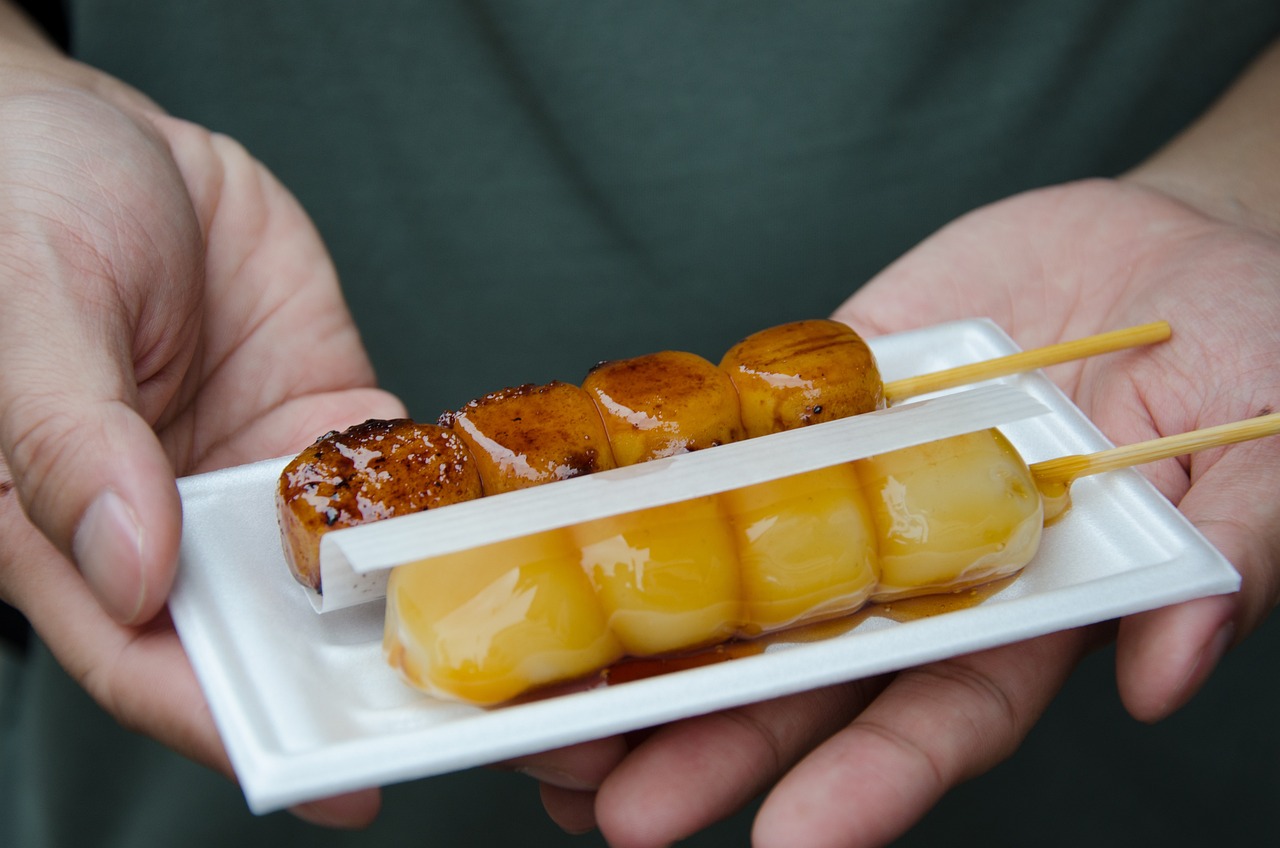
2022-11-04
By Japanese Foodie
Japanese Cuisine
Dessert

Use the Instant Pot’s “Steam” setting to cook your dango dough quickly and evenly. Add water to the base, place your shaped dango on a steamer rack, and steam on high pressure for 10 minutes for perfectly cooked dumplings.
Skip the traditional grilling and use the air fryer for crispy, golden dango. After steaming, lightly brush the dango with a sweet soy sauce glaze and air fry at 375°F for 5-7 minutes to get that satisfying crispy exterior without extra oil.
Use the slow cooker to make the traditional sweet soy sauce or syrup for drizzling over your dango. Set the cooker on low and let the sauce simmer for a few hours, bringing out rich flavors that complement the chewy, steamed dumplings.
Pitfall: Using the wrong flour can affect the texture of the dango.
Tip: Always use *shiratamako* (sweet rice flour) for soft and chewy dango. Regular rice flour will not provide the same smooth texture.
Pitfall: Too much water will make the dough too sticky, while too little water can make it dry and hard.
Tip: Add water gradually until the dough reaches the consistency of a soft, pliable playdough. It should not be too wet or too dry.
Pitfall: Making the dango balls too large or too small can cause uneven cooking.
Tip: Aim for 1-inch diameter balls. This will ensure they cook evenly and have the right texture.
Pitfall: Boiling the dango for too long can make them mushy.
Tip: Boil the dango until they float to the surface (about 5-6 minutes), then let them cook for an additional 1-2 minutes before removing them from the pot.
Pitfall: Coating the dango with toppings too soon can cause them to become soggy.
Tip: Let the dango cool slightly before adding any sweet soy sauce or other toppings. This helps them absorb the flavor without getting too wet.
Pitfall: Storing dango improperly can cause them to harden or become dry.
Tip: Store leftover dango in an airtight container at room temperature for up to 2 days. If they dry out, you can reheat them by steaming or microwaving with a damp towel to restore some moisture.
Pitfall: Serving dango without the right accompaniments can make them less enjoyable.
Tip: Serve dango on skewers, drizzled with sweet soy sauce, or with a dusting of kinako (roasted soybean flour). You can also pair them with tea for a traditional treat.
Preparation Time 20 min
Cook Time 10 min
Total time 30 min